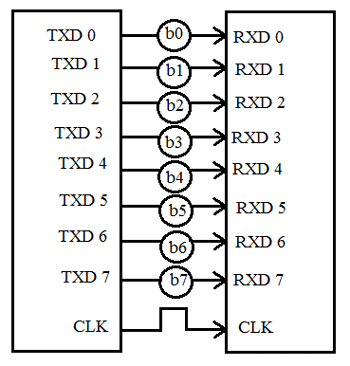
Hence, it requires two arguments that represent both the directions of data communication.Īll devices have their transmitters and receiver. It allows two devices to communicate with each other. UART is abbreviated as Universal Asynchronous Receive Transmit. Let’s take a look at the following standard communication protocols. Moreover, there are hundreds of protocols available for performing this data exchange between an Arduino and other devices by using both wired and wireless pathways.

List of serial communication protocol how to#

What are the disadvantages of the UART communication protocol?.What are the advantages of the UART communication protocol?.What are the methods of communicating with an Arduino?.Many ICs have serial interfaces, as opposed to parallel ones, so that they have fewer pins and are therefore less expensive. In many cases, serial is cheaper to implement than parallel.
List of serial communication protocol Pc#
Budgets for power use, power dissipation, cable cost, component cost, IC die area, PC board area, ESD protection, etc.Crosstalk is less of an issue, because there are fewer conductors in proximity.The extra space allows for better isolation of the channel from its surroundings. A serial connection requires fewer interconnecting cables (e.g., wires/fibers) and hence occupies less space.Clock skew between different channels is not an issue (for unclocked asynchronous serial communication links).Several factors allow serial to be clocked at a higher rate: A parallel link transmits several streams of data simultaneously along multiple channels (e.g., wires, printed circuit tracks, or optical fibers) whereas, a serial link transmits only a single stream of data.Īlthough a serial link may seem inferior to a parallel one, since it can transmit less data per clock cycle, it is often the case that serial links can be clocked considerably faster than parallel links in order to achieve a higher data rate. The communication links, across which computers (or parts of computers) talk to one another, may be either serial or parallel. Some examples of such low-cost serial buses include RS-232, SPI, I☬, UNI/O, 1-Wire and PCI Express. To reduce the number of pins in a package, many ICs use a serial bus to transfer data when speed is not important. Integrated circuits are more expensive when they have more pins. Many communication systems were generally designed to connect two integrated circuits on the same printed circuit board, connected by signal traces on that board (rather than external cables).

Other such cables and ports, transmitting data one bit at a time, include Serial ATA, Serial SCSI, Ethernet cable plugged into Ethernet ports, the Display Data Channel using previously reserved pins of the VGA connector or the DVI port or the HDMI port. The cables that carry digital video are almost invariably serial-such as coax cable plugged into a HD-SDI port, a webcam plugged into a USB port or Firewire port, Ethernet cable connecting an IP camera to a Power over Ethernet port, FPD-Link, etc. Keyboard and mouse cables and ports are almost invariably serial-such as PS/2 port, Apple Desktop Bus and USB. The cables that carry this data (other than "the" serial cable) and the computer ports they plug into are usually referred to with a more specific name, to reduce confusion. Practically all long-distance communication transmits data one bit at a time, rather than in parallel, because it reduces the cost of the cable. Many serial communication systems were originally designed to transfer data over relatively large distances through some sort of data cable.


 0 kommentar(er)
0 kommentar(er)
